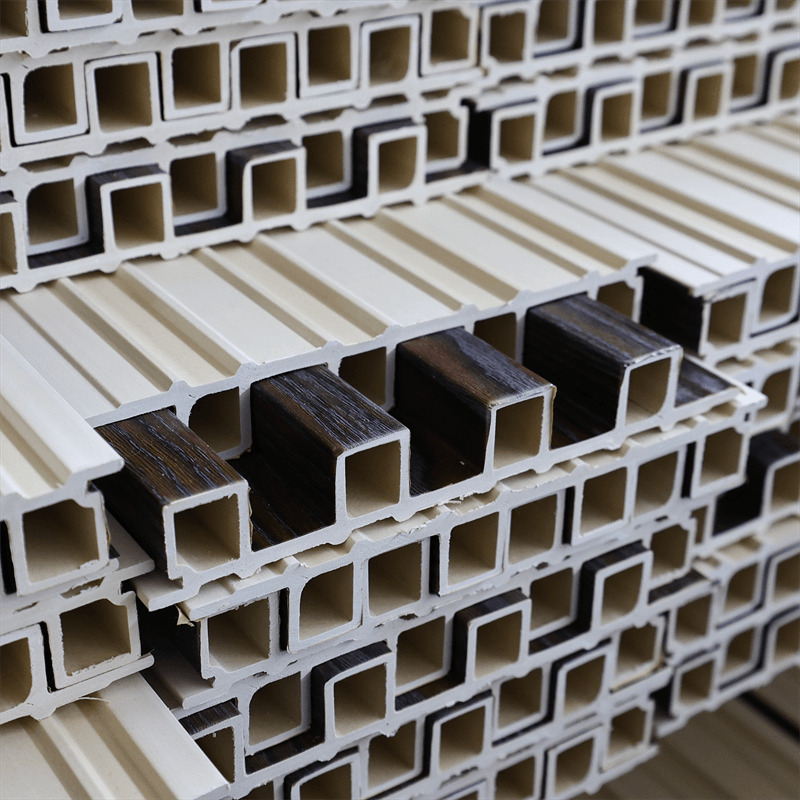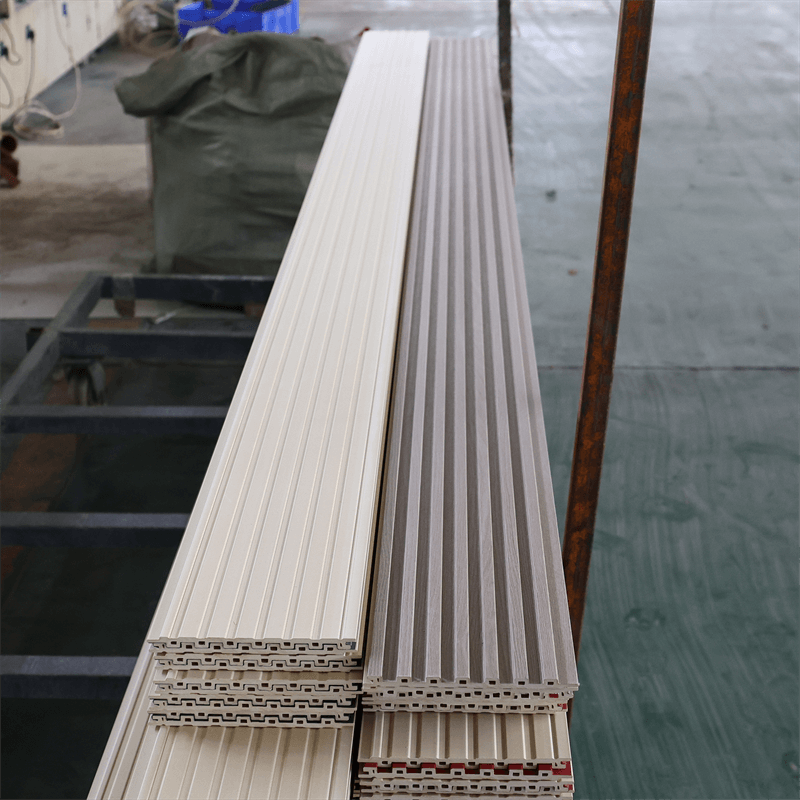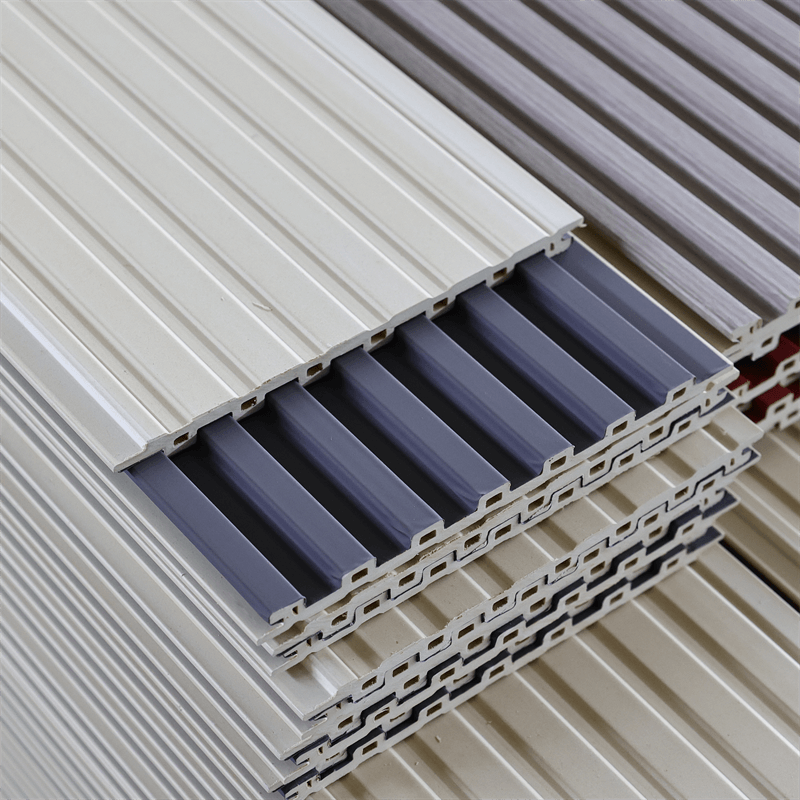Interior design plays a vital role in creating captivating and functional spaces.
With the advent of innovative building materials, designers now have a wide range of options to enhance interior aesthetics and functionality.
Wood-Plastic Composite (WPC) wall panels have emerged as a versatile solution, offering numerous benefits in interior design.
This essay explores the advantages of using WPC wall panels to enhance interior spaces, focusing on their aesthetic appeal, versatility, durability, and ease of installation.

I. Aesthetic Appeal of WPC Wall Panels:
WPC wall panels are known for their aesthetic appeal, adding a touch of elegance and sophistication to interior spaces.
This section delves into the aesthetic advantages of WPC wall panels:
- Natural Wood Look: WPC panels emulate the natural look and texture of wood, offering a warm and inviting ambiance to interior spaces. The panels come in various finishes, such as oak, mahogany, or walnut, providing designers with a wide range of options to match different design styles and preferences.
- Diverse Design Options: WPC wall panels are available in various sizes, shapes, and patterns, enabling designers to unleash their creativity and achieve unique design concepts. From traditional to contemporary designs, the versatility of WPC panels allows for endless possibilities in interior aesthetics.
- Customization: WPC panels can be easily customized to fit specific design requirements. They can be painted, stained, or laminated to achieve desired colors and textures, allowing designers to create personalized and tailored interior spaces.
II. Versatility and Functionality:
WPC wall panels offer versatility and functionality, making them an excellent choice for interior design.
This section explores their practical advantages:
- Lightweight and Easy to Install: WPC panels are lightweight compared to traditional materials, making them easier to handle and install. Their interlocking systems or tongue-and-groove designs facilitate quick and hassle-free installation, saving time and labor costs during the construction process.
- Moisture Resistance: WPC wall panels are resistant to moisture, making them suitable for high-humidity areas such as bathrooms and kitchens. Their moisture resistance prevents warping, rotting, or mold growth, ensuring the durability and longevity of interior surfaces.
- Impact Resistance: WPC panels exhibit excellent impact resistance, making them ideal for areas that experience high traffic or potential impacts. They can withstand accidental bumps, scratches, and abrasions, maintaining their aesthetic appeal even in busy spaces.
- Easy Maintenance: WPC wall panels are easy to clean and maintain, requiring minimal effort to keep them looking fresh and new. Regular dusting and occasional wiping with a damp cloth are usually sufficient to maintain their appearance. Unlike traditional materials that may require periodic refinishing or sealing, WPC panels offer a hassle-free maintenance solution.
III. Durability and Longevity:
WPC wall panels are renowned for their durability, ensuring long-lasting interior surfaces.
This section highlights their durability advantages:
- Resistant to Wear and Tear: WPC panels are highly resistant to wear and tear, making them suitable for high-traffic areas such as hallways, lobbies, and commercial spaces. They can withstand daily use without showing signs of significant wear, ensuring their longevity in interior design applications.
- Fade Resistance: WPC panels are fade-resistant, maintaining their color and vibrancy over time. Unlike traditional materials that may lose their luster due to exposure to sunlight or artificial lighting, WPC panels retain their aesthetic appeal, preserving the intended design aesthetic for extended periods.
IV. Environmental Considerations:
WPC wall panels align with environmental considerations, making them a sustainable choice for interior design.
This section explores their environmental advantages:
- Reduced Wood Consumption: By utilizing wood fibers or flour in their composition, WPC panels reduce the consumption of solid wood. This promotes responsible forestry practices, reduces deforestation, and contributes to the conservation of natural resources.
- Recycled Materials: Some WPC panels incorporate recycled materials, such as post-consumer plastics, reducing waste and diverting materials from landfills. This recycling process helps to minimize the environmental impact associated with plastic waste and supports a circular economy.
- Low Emissions: WPC wall panels have low emissions of volatile organic compounds (VOCs), ensuring better indoor air quality. This feature contributes to a healthier living or working environment, aligning with sustainable design principles that prioritize occupant well-being.

WPC wall panels offer significant advantages in enhancing interior design aesthetics and functionality.
Their aesthetic appeal, versatility, durability, and ease of installation make them an excellent choice for designers seeking to create captivating and sustainable interior spaces.
The inherent qualities of WPC panels, such as their natural wood look, versatility, and resistance to moisture and impact, provide endless design possibilities while ensuring long-term durability and ease of maintenance.
As the demand for sustainable interior design solutions continues to grow, WPC wall panels will play a crucial role in transforming interior spaces into visually stunning and functional environments.

